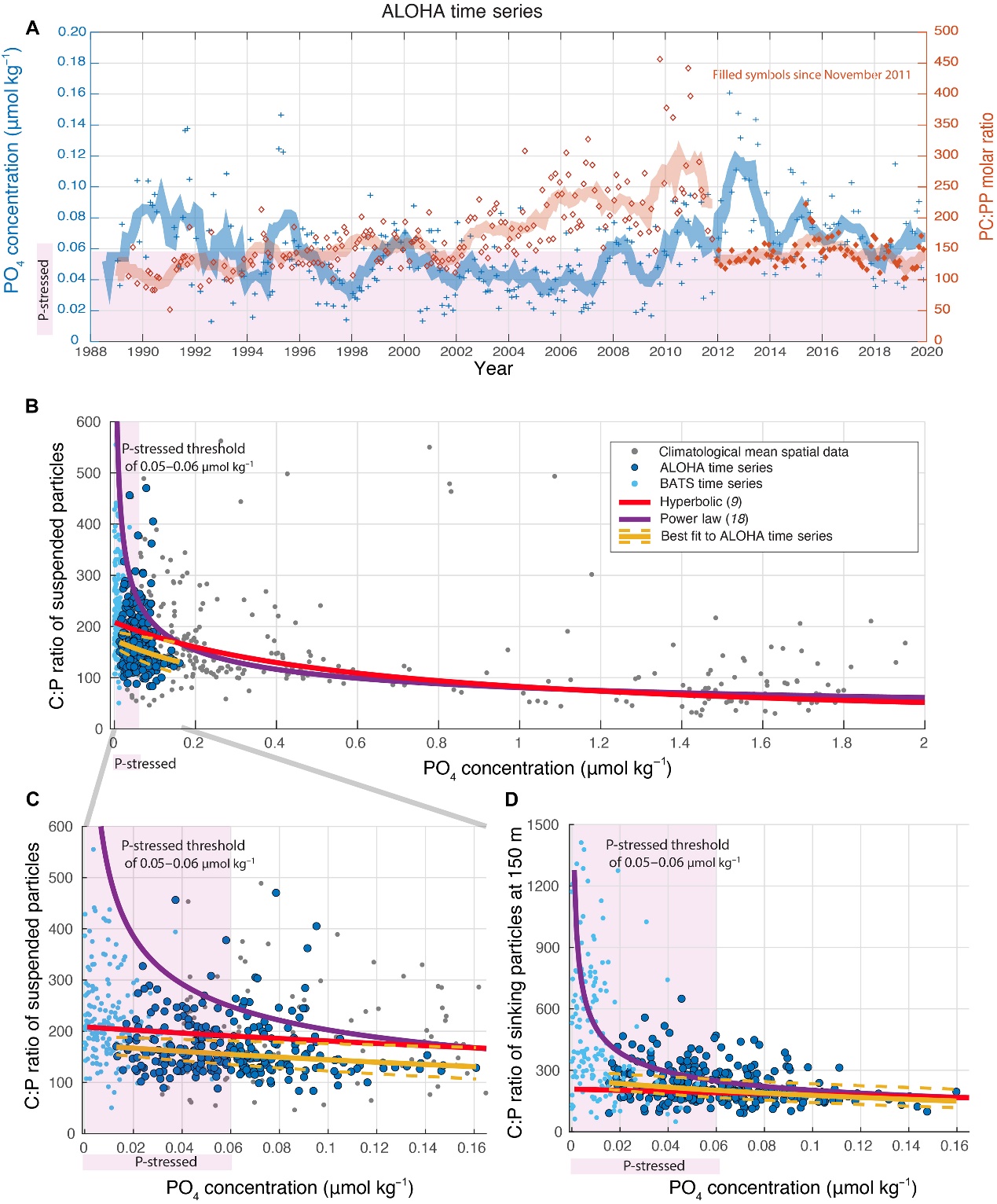浮游植物营养吸收的可塑性维持了未来海洋的净初级生产力
Nutrient uptake plasticity in phytoplankton sustains future ocean net primary production
作者:Keisuke Inomura, Curtis Deutsch, Oliver Jahn, Stephanie Dutkiewicz, Michael J. Follows
期刊:Nature Geoscience
Annually, marine phytoplankton convert approximately 50 billion tons of dissolved inorganic carbon to particulate and dissolved organic carbon, a portion of which is exported to depth via the biological carbon pump. Despite its important roles in regulating atmospheric carbon dioxide via carbon sequestration and in sustaining marine ecosystems, model-projected future changes in marine net primary production are highly uncertain even in the sign of the change. Here, using an Earth system model, we show that frugal utilization of phosphorus by phytoplankton under phosphate-stressed conditions can overcompensate the previously projected 21st century declines due to ocean warming and enhanced stratification. Our results, which are supported by observations from the Hawaii Ocean Time-series program, suggest that nutrient uptake plasticity in the subtropical ocean plays a key role in sustaining phytoplankton productivity and carbon export production in a warmer world.

Fig. Relationships between surface PO4 and the C:P ratio of suspended and sinking particles.
(A) Time series of monthly mean PO4 concentrations (blue) and the ratio of PC concentration to PP concentration (red) averaged over depths of 0 to 125 m at Station ALOHA. The C:P ratios before November 2011 (a time of PP measurement method change) are shown as open diamonds, and those since November 2011 are shown as filled diamonds. Shaded red and blue lines are 12-month moving averages of the respective monthly mean data. The PO4 concentrations lower than a P-stressed threshold of 0.06 μmol kg−1 (26) are shaded in purple. (B) Scatter plot showing the C:P ratios of suspended particles in the y axis and the surface PO4 concentrations in the x axis. The ALOHA time-series data [presented in (A)] are shown in dark blue dots. The climatological mean spatially distributed data (gray dots) are taken from (32) and (33). The BATS time-series data are taken from (15) and plotted in sky blue dots. The two empirical relationships previously derived on the basis of the spatial data are shown as red [hyperbolic; Galbraith and Martiny (9)] and purple [power law; Tanioka and Matsumoto (18)] lines. The best fit to the ALOHA time-series data, P:C = (12.2 ± 7.4)‰ (per mil) × [PO4] + (5.8 ± 0.5)‰, is shown in yellow solid line with an SE denoted as yellow dashed lines. (C) Oligotrophic portion of (B) is zoomed in. (D) Scatter plot showing the C:P ratios of sinking particles at 150 m in the y axis and the surface PO4 concentrations in the x axis. The best fit to the ALOHA time-series data is P:C = (17.2 ± 8.3)‰ × [PO4] + (3.9 ± 0.5)‰.
每年海洋中的浮游植物将大约500亿吨的溶解无机碳转变为颗粒物和溶解有机碳,其中一部分通过生物碳泵输出到海洋深处。尽管浮游植物在通过固碳调节大气二氧化碳和维持海洋生态系统方面发挥重要作用,但利用模型预测的未来海洋净初级生产力的变化具有高度的不确定性,甚至连变化的标志也是如此。本文中我们通过采用一种地球系统模型表明浮游植物在磷酸盐胁迫条件下对磷的节约利用可以过度补偿之前预测的21世纪由于海洋变暖和分层增强现象所带来的下降。本研究模拟结果与夏威夷海洋时间序列(Hawaii Ocean Time-series)项目实地观测结果一致,即在全球变暖情况下,亚热带海洋中浮游植物利用磷的适应性变化对维持浮游植物生产力和碳输出能力具有重要的调节作用。
(实习生吕晴编译)








